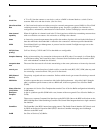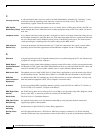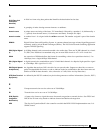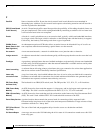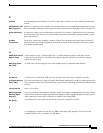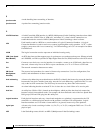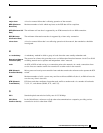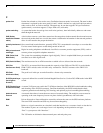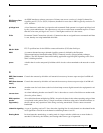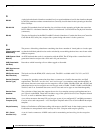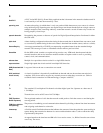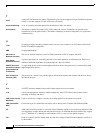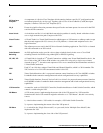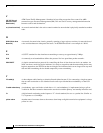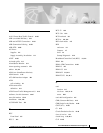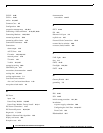
Glossary
13
Cisco BPX 8600 Series Installation and Configuration
Release 9.3.10, Part Number 78-11603-01 Rev. D0, July 2001
PRI (Primary Rate
Interface)
An ISDN interface to primary rate access. Primary rate access consists of a single D channel for
signalling and 23 (T1) or 30 (E1) B (bearer) channels for user data. A PRI is typically carried on T1
or E1 facilities.
privilege level
A level between 1 and 6 that is assigned to each command. Each operator is assigned a privilege level
by the system administrator. The operator may only access and execute commands equal to or lower
than his or her own privilege level. Level 1 is the highest and level 6 is the lowest.
PVCs
Permanent Virtual Connections (circuits). Connections that are assigned but not connected until data
is sent, thereby not using bandwidth when idle.
Q
QQ.921/Q.931
ITU-T specifications for the ISDN use network interface (UNI) data link layer.
QSIG
A common-channel message-oriented signalling protocol, defined by the European
Telecommunications Standard Institute (ETSI), commonly used by private branch exchanges
(PBXes). The INS Dynamic Network Switching application supports QSIG signalling to the Cisco
WAN switching network.
queue
A buffer that is used to temporarily hold data while it waits to be transmitted to the network or to the
user.
R
RRIF (Rate increase
factor)
Controls the amount by which the cell transmission rate may increase upon receipt of an RM cell.
RDF (Rate decrease
factor)
Controls the amount by which the cell transmission rate may decrease upon receipt of an RM cell.
red alarm
Another name for local alarm as the local alarm lamp on most digital transmission equipment is red
in color.
remote alarm
An alarm indicating that the associated T1 line is down due to a receive line failure on another node.
(See also yellow alarm.)
RPS (repetitive
pattern
suppression)
Also called data frame multiplexing (DFM). An option for data circuits where repeating strings of data
are replaced on the packet line by a single occurrence of the data string and a code that indicates to
thefarendhowmayrepetitionsofthestringwasbeingtransmitted.Usedtoconservenetwork
bandwidth.
robbed bit signaling
A type of signaling used on T1 lines where the signaling bits for each channel are substituted for the
least significant voice bit in each channel word during frames 6 and 12.
Routing Node
In tiered networks terminology, a routing node is a larger switch to which one or more feeders is
attached. Collectively, the feeder(s) and routing node form a type of supernode.
P



